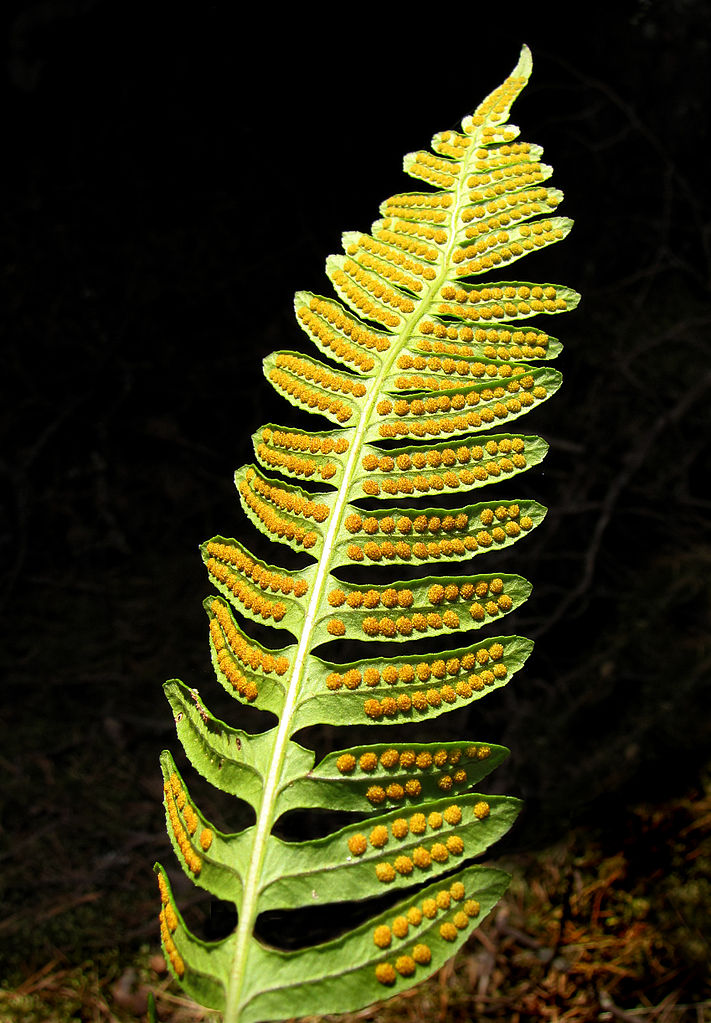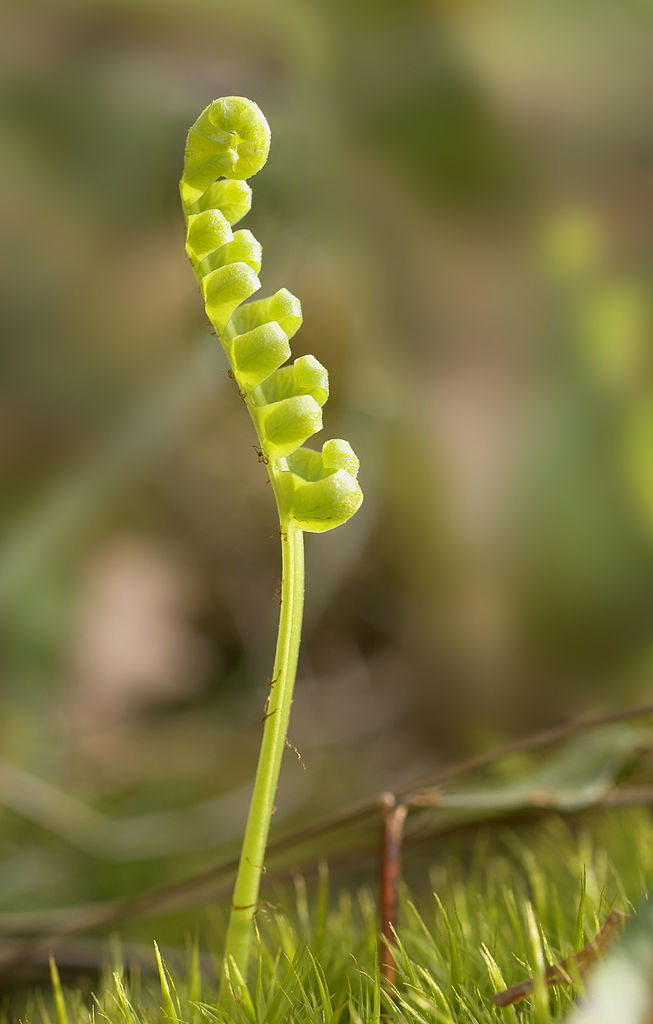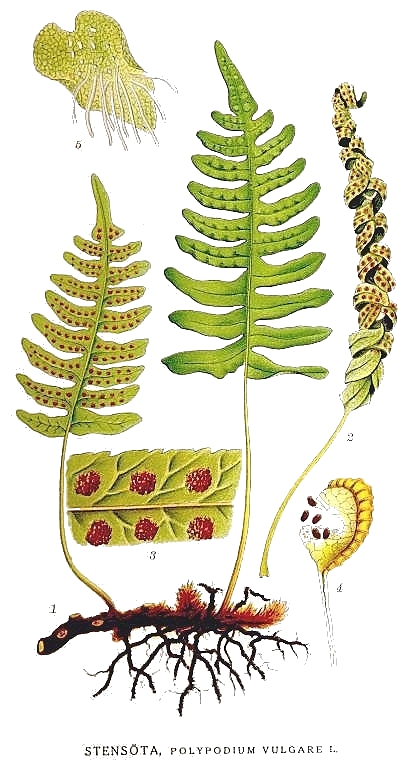True ferns (Class Polypodiopsida) differ from whisk ferns in two distinct ways. First, true ferns have megaphylls, large fronds with a branching vein network. At the origin of this adaptation, true ferns were able to capture more sunlight than other competitors due to the increased surface area of their leaves, giving them a clear competitive advantage among plants. Club moss’s leaf size was limited due to lack of branching within the microphyll. Since water only efficiently diffuses across just a few cells, land plant cells are always very close to their vascular system.
Secondly, unlike whisk ferns true ferns have true roots, an extensive branching network of root cells able to penetrate deep into soil in order to extract water and nutrients. Like mosses, liverworts, and club mosses, ferns reproduce via spores. However, ferns are more similar to other non-vascular seedless plants in their reproductive life cycle, alternation of generations, where vegetative cells are diploid and sex cells are haploid. Spores in ferns typically aggregate into clusters on the bottom of the leaf in structures known as sori.




